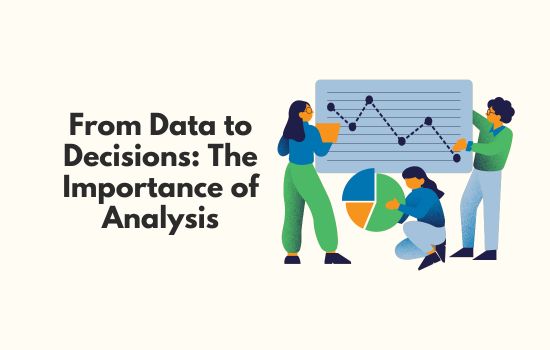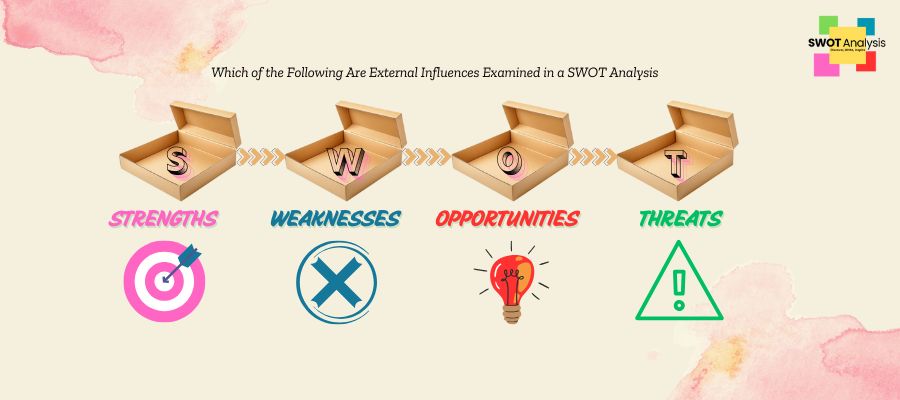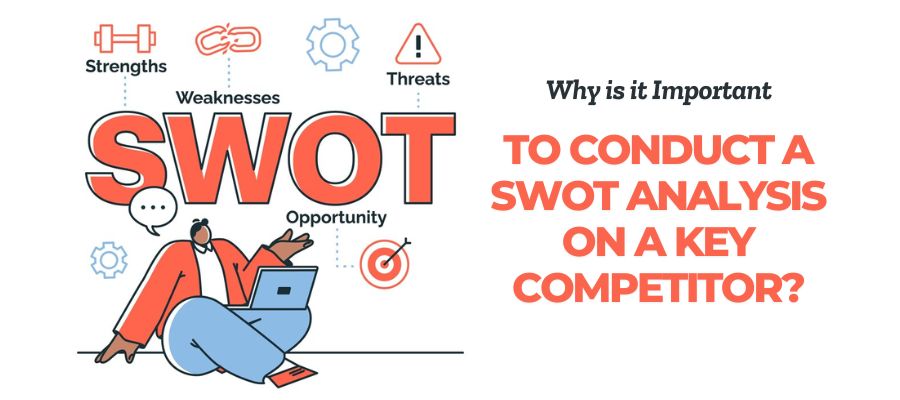Data is being produced in such large quantities in today’s environment, that businesses seldom lack information. However, raw data in its purest form lacks the importance of data until it has been processed and synthesized. The analysis enables the conversion of this information into useful insight with a view of helping businesses make proper decisions and chart their future course. This blog focuses on the issues of analysis as a crucial step in the decision-making process and includes a description of basic techniques and their usage.
Understanding the Role of Analysis
Analysis is the process of examining data to uncover patterns, correlations, and insights that inform decision-making. It involves various methods, from simple descriptive statistics to advanced predictive modeling. The goal is to convert raw data into meaningful information that can guide strategic business decisions.
Key Types of Analysis
Different kinds of analysis are important to know for using data for managerial purposes properly. The numeric type covers each of these areas and offers different perspectives which are very useful for making balanced decisions by businesses. Let’s delve deeper into the key types of analysis:Let’s delve deeper into the key types of analysis:
Descriptive Analysis
Purpose: To summarize and understand historical data, clearly showing what has happened over a specific period.
Methodology:
- Data Collection: Gather data from various sources such as sales records, customer feedback, and operational logs.
- Data Summarization: Use statistical measures like mean, median, mode, and standard deviation to summarize the data.
- Visualization: Create charts, graphs, and tables to visually represent data trends and patterns.
Example: A monthly sales report that shows the total sales, average sales per day, and the most popular products. This type of analysis helps businesses understand their performance over the past month and identify seasonal trends or patterns in customer behavior.
Diagnostic Analysis
Purpose: To investigate and understand the reasons behind specific events or outcomes, essentially answering the question, “Why did this happen?”
Methodology:
- Data Comparison: Compare data from different periods or between different segments to identify anomalies.
- Root Cause Analysis: Use techniques like the 5 Whys, fishbone diagrams, and regression analysis to drill down into the underlying causes of an issue.
- Correlation Analysis: Identify relationships between variables to understand how different factors might contribute to the outcome.
Example: A diagnostic analysis might be used to investigate a sudden drop in sales. By comparing data across various factors such as marketing spend, economic conditions, and competitor actions, a business can pinpoint the specific reasons for the decline and take corrective action.
Predictive Analysis
Purpose: To forecast future events or trends based on historical data, helping businesses anticipate what might happen next.
Methodology:
- Historical Data Analysis: Analyze past data to identify trends and patterns.
- Predictive Modeling: Use statistical models and machine learning algorithms to make predictions. Common models include linear regression, decision trees, and neural networks.
- Scenario Analysis: Test different scenarios to understand potential outcomes under various conditions.
Example: An e-commerce company might use predictive analysis to forecast future sales based on historical data and market trends. This can help the company plan inventory, allocate resources, and set realistic sales targets.
Prescriptive Analysis
Purpose: To provide actionable recommendations based on data analysis, essentially answering the question, “What should we do?”
Methodology:
- Optimization Models: Use mathematical models to identify the best course of action among various alternatives. Techniques include linear programming and simulation.
- Decision Trees: Create decision trees to map out different decision paths and their potential outcomes.
- Scenario Planning: Evaluate different scenarios to understand the impact of various decisions and choose the optimal strategy.
Example: A logistics company might use prescriptive analysis to determine the most efficient delivery routes. By analyzing traffic patterns, fuel costs, and delivery schedules, the company can recommend routes that minimize costs and ensure timely deliveries.
Summary of Key Types of Analysis
| Type of Analysis | Purpose | Key Techniques | Example Use Case |
|---|---|---|---|
| Descriptive | Understand what has happened | Statistical summarization, visualization | Monthly sales reports |
| Diagnostic | Determine why something happened | Root cause analysis, correlation analysis | Identifying causes of sales decline |
| Predictive | Forecast future events | Predictive modeling, scenario analysis | Sales forecasting |
| Prescriptive | Recommend actions | Optimization models, decision trees | Optimizing delivery routes |
Each type of analysis plays a vital role in the decision-making process, providing unique insights that help businesses navigate their complex environments. By leveraging these analytical techniques, organizations can transform raw data into strategic advantages, driving growth and success.
The Importance of Analysis in Decision-Making
Turning Data into Insights
Without analysis, data remains a collection of numbers and facts with no context. Analysis helps in identifying trends, anomalies, and relationships within the data, providing a clearer picture of the business landscape.
Enhancing Decision Accuracy
Data-driven decisions are typically more accurate than those based on intuition alone. Analytical methods reduce uncertainty by providing evidence-based insights, leading to better outcomes.
Strategic Planning and Forecasting
Predictive and prescriptive analyses are invaluable for strategic planning. By forecasting future trends and recommending actions, these analyses help businesses prepare for potential challenges and opportunities.
Improving Efficiency and Productivity
Diagnostic and descriptive analyses identify inefficiencies and areas for improvement within business processes. This can lead to cost reductions and increased productivity.
Tools and Techniques for Effective Analysis
Common Analytical Tools
| Tool | Description | Use Case |
|---|---|---|
| Excel | Spreadsheet software with basic analysis tools | Small to medium-sized data analysis |
| SQL | Language for managing and querying databases | Large datasets stored in relational databases |
| Python/R | Programming languages with extensive libraries | Advanced statistical and predictive modeling |
| Tableau | Data visualization software | Creating interactive and shareable dashboards |
Best Practices for Data Analysis
Effective data analysis requires a systematic approach and adherence to best practices. By following these guidelines, businesses can ensure that their analyses are accurate, relevant, and actionable. Here are the key best practices for data analysis:
Ensure Data Quality
Importance: High-quality data is the foundation of reliable analysis. Poor data quality can lead to incorrect conclusions and misguided decisions.
Steps to Ensure Data Quality:
- Data Cleaning: Remove duplicates, correct errors, and handle missing values. Use techniques like imputation for missing data and normalization for consistency.
- Data Validation: Verify data accuracy and consistency. Cross-check data with reliable sources and perform validation checks.
- Data Integration: Ensure that data from different sources is correctly integrated. Use consistent formats and reconcile any discrepancies.
Choose the Right Method
Importance: Selecting the appropriate analytical method is crucial for obtaining relevant insights. Different methods are suited to different types of data and business questions.
Steps to Choose the Right Method:
- Define Objectives: Clearly articulate the business question or problem. Understand what you aim to achieve with the analysis.
- Understand Data Characteristics: Consider the type of data (quantitative or qualitative), data volume, and data variability.
- Match Method to Objective: Choose an analytical method that aligns with your objectives. For example, use descriptive analysis for understanding past trends and predictive analysis for forecasting future outcomes.
Visualize Findings
Importance: Visualization makes data insights more accessible and understandable. Well-designed visuals can highlight key findings and trends that might be missed in raw data.
Steps to Visualize Findings:
- Use Appropriate Charts: Select chart types that best represent the data. For example, use line charts for trends over time, bar charts for comparisons, and scatter plots for correlations.
- Keep It Simple: Avoid clutter and focus on clarity. Use colors and labels effectively to enhance comprehension.
- Tell a Story: Create a narrative with your visuals. Highlight key points and guide the audience through the insights.
Collaborate with Stakeholders
Importance: Involving stakeholders ensures that the analysis is aligned with business needs and that the insights are actionable.
Steps to Collaborate with Stakeholders:
- Identify Key Stakeholders: Determine who will benefit from the analysis and who can provide valuable input.
- Communicate Clearly: Share your objectives, methods, and preliminary findings with stakeholders. Seek their feedback and adjust the analysis as needed.
- Present Insights Effectively: Tailor the presentation of findings to the audience. Use visuals and narrative to make the insights accessible and relevant.
Continuously Improve
Importance: The field of data analysis is constantly evolving. Regularly updating your methods and tools ensures that you stay current and improve the accuracy and relevance of your analyses.
Steps to Continuously Improve:
- Stay Informed: Keep up with the latest developments in data analysis techniques and tools. Attend workshops, webinars, and conferences.
- Review and Reflect: Regularly evaluate past analyses. Identify what worked well and what could be improved.
- Adopt New Tools: Explore new software and tools that can enhance your analytical capabilities. Integrate these tools into your workflow as appropriate.
Summary of Best Practices for Data Analysis
| Best Practice | Description | Key Actions |
|---|---|---|
| Ensure Data Quality | Maintain high data quality for accurate analysis | Clean data, validate accuracy, integrate data sources |
| Choose the Right Method | Select appropriate methods for relevant insights | Define objectives, understand data, match method to objective |
| Visualize Findings | Make insights accessible through effective visualization | Use appropriate charts, keep visuals simple, tell a story |
| Collaborate with Stakeholders | Align analysis with business needs and ensure actionable insights | Identify stakeholders, communicate clearly, present findings effectively |
| Continuously Improve | Keep methods and tools up-to-date for ongoing relevance | Stay informed, review past analyses, adopt new tools |
By adhering to these best practices, businesses can maximize the value they derive from their data analysis efforts. This systematic approach ensures that data is transformed into actionable insights, driving informed decision-making and strategic growth.
Conclusion
Controlling the process for the flow of data, analysis is the bridge between knowledge and action, converting information into insights. Using various analytic tools allows for reducing mistakes in decision-making, developing long-term strategies and improving business productivity. The torrent of information creates a vivid picture of the current business world where steady success is highly dependent on the ability to analyze information.
Resources
- “Data Science for Business” by Foster Provost and Tom Fawcett – A comprehensive guide on using data analytics for business decisions.
- “Predictive Analytics: The Power to Predict Who Will Click, Buy, Lie, or Die” by Eric Siegel – Insightful book on predictive analysis applications.
- Harvard Business Review (HBR) Articles – Regularly features case studies and articles on data analysis in business contexts.





